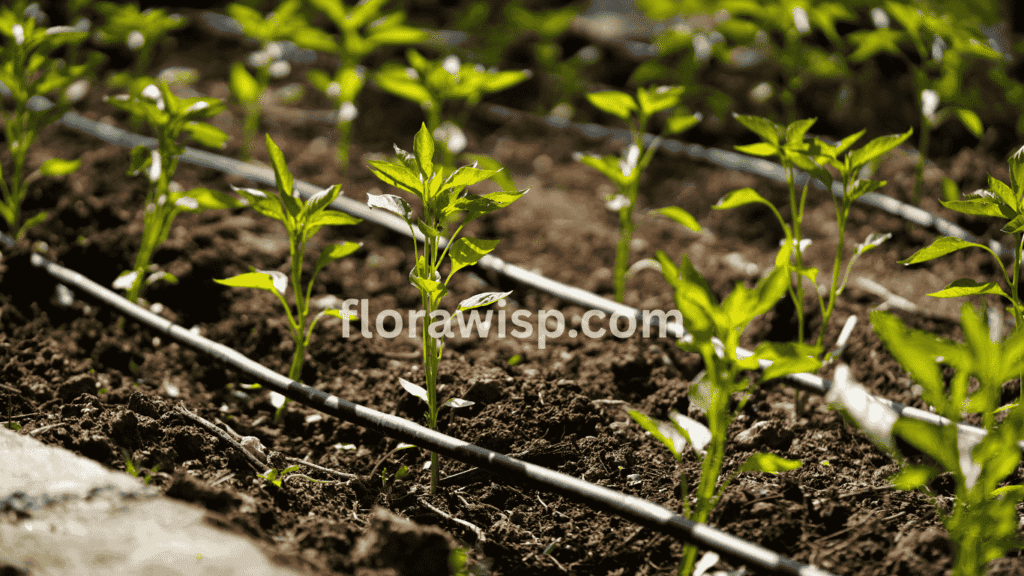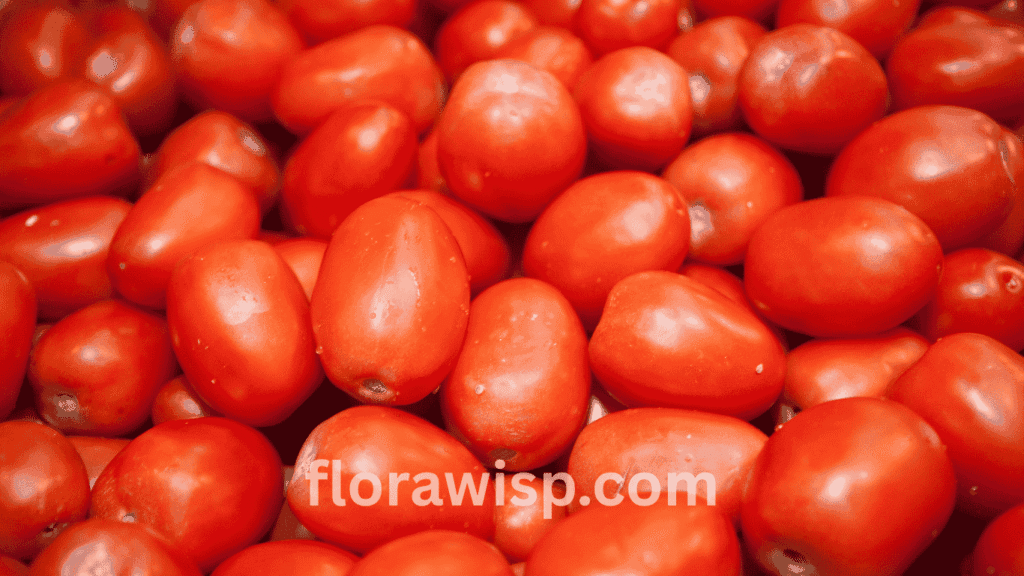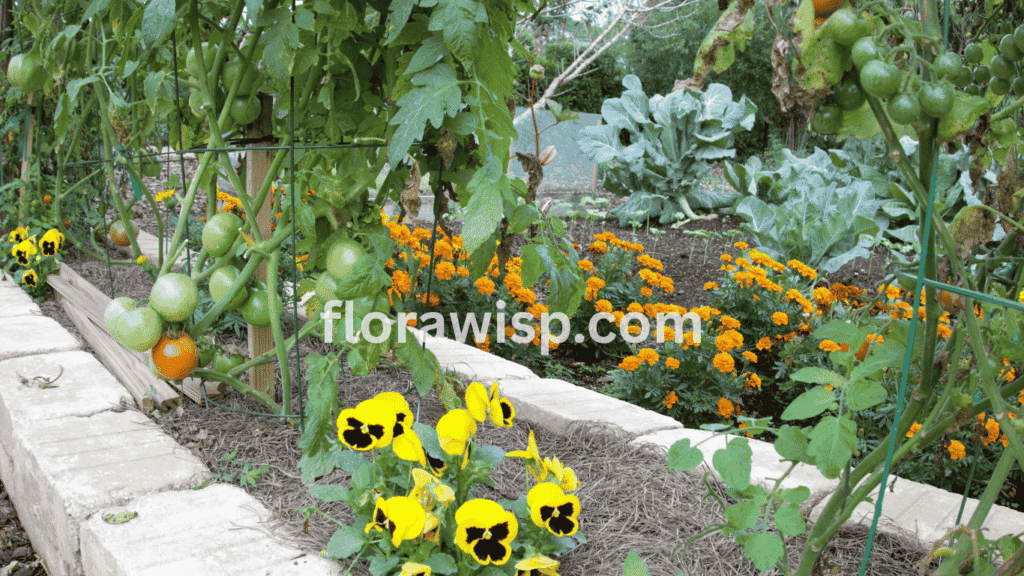Discover expert tips for planting tomatoes in Texas, including timing, varieties, and climate-smart techniques to grow flavorful, heat-resistant tomatoes across all Texas regions. When I planted my first tomato crop in Central Texas, I thought I had it figured out sunlight, soil, and a hose. I skipped checking soil temperatures and picked random varieties from a garden center, ignoring the basics of Planting Tomato Seeds. Within weeks, my tomatoes wilted under the Texas heat. That first failure taught me that growing tomatoes in this state isn’t just gardening, it’s regional science.
In This Article
Texas’ climate swings from Gulf Coast humidity to High Plains drought, which makes “one-size-fits-all” advice useless here. From when and where you plant, to what varieties you choose, whether you’re growing beefsteaks or learning How to Plant Cherry Tomatoes, each decision must match your microclimate. With the right knowledge and a few proven tricks, you can grow juicy, resilient tomatoes even through scorching summers.
This guide will walk you through everything I’ve learned through years of hands-on experience. Whether you’re new or seasoned, it’s packed with practical advice and regional secrets for planting tomatoes in Texas.
1. Planting Tomatoes in Texas: Why Timing and Location Matter
Planting tomatoes in Texas is all about understanding your region and respecting its timing. Texas covers USDA zones 6b through 9b, so planting schedules differ widely. In general, spring planting begins after the last frost, when soil temperatures reach 60°F. In warmer parts like South Texas or Houston, this could be as early as mid-February. In cooler regions like North Texas, you may wait until late March.
Fall planting is just as critical. Tomatoes need time to mature before the first frost, which in some areas can arrive as early as November. For fall crops, transplanting by mid-July gives plants the best chance. But beware planting too early when the soil is still cold can slow root development and lead to poor yields.
One North Texas grower reported losing over half his crop by planting two weeks too early. The roots sat in chilly, compacted soil and never took off. In contrast, his neighbor who waited until soil temps warmed above 60°F had thriving plants and harvested them in early summer. Timing and location aren’t just details; they’re the foundation for a healthy, productive tomato crop in Texas.
2. When to Plant Tomatoes in North, Central, East & Houston Texas
Texas is vast, and so is its climate. Timing your tomato planting correctly is key to ensuring healthy growth and productive harvests.
North Texas:
In areas like Dallas and Denton, start seeds indoors by mid-January and transplant them outdoors from late March to early April. Because the region sees late frosts, waiting until the danger has passed is essential. For a fall crop, transplant seedlings no later than mid-July. One farmer in McKinney shared that a March 28 transplant date consistently gave him the strongest plants.
Central Texas:
For places like Austin and San Marcos, tomato transplants go in between March 1–15. Fall planting should happen between July 15–30. Central Texas heat ramps up fast, so early planting ensures fruit set before peak summer. A grower in Buda swears by row covers during March cold snaps to give young plants a head start.
East Texas:
With its humid, rain-heavy spring, East Texas allows for transplants from late February to mid-March. For fall, plant mid-July. The moisture-rich soil warms earlier here, which helps with strong root establishment. A gardener in Tyler credits his early February soil prep and well-drained raised beds for consistent yields.
Houston and Gulf Coast:
Houston’s heat and humidity demand early action. Plant tomatoes outdoors by late February. Fall planting begins from July 1–15. Gardeners here have great success with shade cloth, early-morning watering, and raised beds to improve airflow. One grower in the Heights neighborhood harvests by mid-May using a mix of heat-tolerant hybrids and aggressive mulch strategies.
Knowing your region’s weather rhythms and adjusting your schedule accordingly will dramatically boost your tomato growing success in Texas.
3. Best Tomato Plants for North Texas Gardeners

North Texas gardeners face a tough mix of cold spring snaps and searing summer sun. The key is choosing varieties that mature early, tolerate heat, and resist common diseases. When planting tomatoes in Texas, especially in the northern zones, the goal is to beat the temperature swings and maximize yield within a shorter growing window.
Some of the best tomato plants for North Texas include ‘Celebrity,’ ‘Tycoon,’ and ‘Early Girl.’ These are proven performers in our fluctuating weather and can handle heat spikes without dropping blossoms. ‘Juliet’ grape tomatoes are another favorite. One gardener in Denton County told me he’s pulled pounds of crack-resistant fruit off just a few vines, even during stormy summers. Their ability to resist splitting is a huge advantage during unpredictable rains.
North Texas soils tend to be alkaline and compact, so raised beds filled with compost-rich loam give roots the best start. Adding gypsum or peat moss helps lower pH slightly and improves drainage. In containers, stick with determinate varieties like ‘Bush Early Girl’ for manageable size. For in-ground beds with more room, go with indeterminate types they’ll produce all season long with proper support.
When selecting transplants, always check the tags for resistance to nematodes, Fusarium wilt, and Verticillium wilt. These soil-borne issues can ruin a crop if ignored. One Frisco gardener I met uses disease-resistant hybrids and rotates planting locations yearly to maintain healthy soil. If you’re new to gardening and looking to build a strong foundation, check out our guide on Gardening for Beginners to get started with confidence.
4. Heat Tolerant Tomatoes Texas Gardeners Swear By

Texas summers are no joke, triple-digit days can stretch for weeks. When planting tomatoes in Texas, choosing heat-tolerant varieties isn’t optional; it’s survival. Thankfully, cultivars like ‘Heatmaster,’ ‘Solar Fire,’ and ‘Phoenix’ were bred for this kind of stress. These tomatoes continue setting fruit even when temperatures climb above 90°F, while most other varieties shut down.
‘Heatmaster’ is a top choice for backyard gardeners looking for uniform slicing tomatoes with minimal cracking. ‘Solar Fire ‘, originally tested in South Texas, consistently outperforms traditional hybrids; one trial showed it yielding 35% more during peak summer. ‘Phoenix’ thrives in high humidity and resists blossom drop even when night temps stay elevated.
To get the most out of these varieties when planting tomatoes in Texas, use deep mulch 3 to 4 inches of straw or shredded leaves to lock in soil moisture and suppress weeds. Morning watering is essential; it reduces evaporation and keeps leaves dry, minimizing disease risk. Drip irrigation is a game-changer, especially for raised beds and container setups.
Strong staking is another must. Texas storms often bring sudden wind gusts, so invest in sturdy tomato cages or T-posts with trellis netting. In my own Corpus Christi plot, mulching early and using drip tape with ‘Solar Fire’ gave me steady harvests deep into July, long after neighboring plots had given up. By planning smart and choosing battle-tested varieties, your Texas tomato garden can thrive even in peak summer heat.
5. Amish Tomatoes in Texas: Are They Worth Growing?

Amish heirloom tomatoes are a favorite for flavor enthusiasts, but they do come with a learning curve especially when planting tomatoes in Texas. Cultivars like ‘Brandywine’ and ‘Amish Paste’ are well-known for their rich taste and meaty flesh, making them great for slicing and sauces. However, their longer maturity period and weaker disease resistance make them a bit of a gamble in Texas’ unpredictable climate.
That doesn’t mean they’re off-limits. Gardeners who provide the right conditions often report excellent results. These tomatoes perform best with afternoon shade, strong airflow, and consistent organic care. A copper-based fungicide can go a long way in preventing early blight, which heirlooms are particularly susceptible to. One grower in Waco set up a trellis system and planted ‘Amish Paste’ in compost-rich beds shaded by climbing beans. The result? Nearly 50 pounds of tomatoes from just four plants over the season.
If you’re committed to nurturing them and value taste over convenience, Amish tomatoes in Texas are absolutely worth trying. Just don’t expect them to behave like modern hybrids. They’ll test your patience but reward you with exceptional flavor and a deeper appreciation for old-fashioned gardening.
6. Top Companion Plants for Tomatoes to Boost Yield Naturally

Good neighbors matter especially in Texas gardens where climate challenges are real. Basil is one of the best companion for Planting tomatoes in Texas; it not only improves flavor but also helps repel hornworms and mosquitoes. Marigolds serve as natural pest bouncers by deterring nematodes and whiteflies. Garlic and onions repel aphids while also fitting neatly at the edges of raised beds without crowding tomatoes. Carrots loosen the soil, encouraging deeper root growth and better drainage especially useful in heavier clay soils common across Texas.
A gardener I met in Bryan swears by planting marigold and basil around his tomato beds. He noticed fewer pest issues and better overall pollination during bloom. The fragrant herbs may also help mask the scent of tomatoes, confusing pests that rely on smell. Lettuce and spinach can act as early-season ground covers, preserving soil moisture before the tomato canopy takes over. Nasturtiums draw aphids away from tomato stems, acting as a sacrificial trap crop.
Avoid planting tomatoes near brassicas (like broccoli or cabbage), which can stunt growth, or near corn, which competes for similar nutrients and attracts tomato fruit worms. Companion planting isn’t just about plant friends, it’s about creating a healthy ecosystem where tomatoes thrive naturally. In my own garden outside College Station, interplanting basil, chives, and marigolds helped boost yield by nearly 20% one season without a single synthetic spray. Smart companion choices can be a game changer when planting tomatoes in Texas.
For a detailed, step-by-step guide on how to grow healthy marigolds from seed including companion pairings, planting tips, and pest-fighting benefits visit my full article on Marigold seeds.
7. Maximize Growth with the Right Support: Texas Tomato Cages

When you’re growing tomatoes under the intense Texas sun, proper support isn’t optional, it’s essential. Indeterminate varieties can grow over 6 feet tall, and with high winds, rain, and heavy fruit loads, weak supports simply don’t cut it. Flimsy wire cones collapse easily under pressure. Instead, use Texas tomato cages made from heavy-duty welded wire mesh, ideally 5–6 feet tall and at least 16 inches in diameter. These give robust root systems and growing vines the room they need to breathe and climb.
One grower in Amarillo shared how switching to homemade cattle panel cages reduced his plant breakage by 40%. Those winds off the plains are no joke, and strong cages make the difference between a broken stem and a thriving harvest. T-posts combined with horizontal twine lines work well for row plantings. I’ve had great success in San Angelo using a Florida weave system with T-posts spaced every 3 feet. It’s affordable, keeps airflow strong, and supports fruit weight reliably.
Proper support also improves tomato plant health. Caged or staked plants get better airflow, reducing fungal risks like early blight. Plus, fruit stays off the ground, which prevents rot and keeps bugs away. Whether you’re growing in raised beds or open ground, investing in sturdy, well-designed support like Texas tomato cages ensures your plants can handle anything the Texas climate throws at them.
8. Understanding the Tomato Season in Texas
Tomato season in Texas offers two clear windows for planting: spring and fall. In spring, you’ll want to transplant once soil temperatures warm past 60°F usually from late February to early March, depending on the region. Harvests typically continue through June before summer heat intensifies. For fall crops, timing is tighter. Transplant mid-July through early August to ensure fruits ripen before the first frost, which often arrives by mid-November in northern areas.
Different regions experience unique seasonal advantages. Coastal areas like Houston enjoy longer growing seasons due to milder winters, allowing for extended fall production. West Texas gardeners face shorter windows but benefit from intense sunlight. A gardener in Austin uses a handheld soil thermometer and follows local frost dates to time her spring and fall tomato plantings effectively. This simple habit helped her grow tomatoes nearly eight months out of the year.
Planting tomatoes in Texas requires flexibility and close attention to climate cues. Monitor local forecasts, use row covers when needed, and be prepared to shade fall transplants during lingering summer heat. Understanding your tomato season in Texas gives you a major edge in producing flavorful, consistent harvests.
9. Pro Tips for Year-Round Tomato Success in Texas
Mastering year-round tomato production in Texas takes consistency, care, and climate-smart choices. Starting with mulch 3 to 4 inches of straw or shredded leaves help conserve moisture, reduce weeds, and stabilize soil temperature during extreme swings. Use drip irrigation or soaker hoses to deliver water directly to roots, minimizing splash and fungal issues. Rotate crops each season to prevent buildup of soil-borne diseases like fusarium and nematodes.
In the brutal summer months, offer afternoon shade using lightweight row covers or shade cloths. For pest control, a Fort Worth gardener reported great success alternating neem oil and BT (Bacillus thuringiensis) sprays every 10 days. These natural methods helped keep hornworms and loopers in check without harming pollinators. Regular weekly inspections are critical early detection prevents outbreaks from damaging your crop.
A Houston grower extends his tomato season by using greenhouse starts in January and fabric row tunnels in November. With strategic planning, Texas gardeners can achieve harvests up to 9 or even 10 months per year. Planting tomatoes in Texas doesn’t mean accepting limits, it means working with the seasons, not against them.
FAQs
Q. How to grow tomatoes in Texas successfully?
To grow tomatoes in Texas, start with heat-tolerant varieties like Celebrity or Solar Fire. Plant in raised beds with compost-rich soil for drainage. I mulch early to keep roots cool and water consistently at the base to prevent blossom end rot. Morning sun is key at least 6 hours daily. I also cage them early to avoid damaging roots later. Timing and soil prep make all the difference in our climate.
Q. What is the best time to grow tomatoes in Texas?
The best time to grow tomatoes in Texas is early spring between late February and mid-March. I always aim to transplant after the last frost but before temps hit 90°F. In Central Texas, that’s usually mid-March. Fall planting is possible too mid-July to early August but it requires shade cloth and extra watering. Starting at the right time gives tomatoes a head start before heat stress sets in.
Q. When to plant tomatoes in Texas?
Do Planting tomatoes in Texas after the last frost when soil warms to 60°F. This generally falls between mid-February and mid-March, depending on your region. I rely on a soil thermometer and watch for consistent 55°F night time temps before planting. A Central Texas grower I know plants every March 10th and gets steady results, year after year. This small habit can mean the difference between early success and frost damage.
Q. When to plant fall tomatoes in Texas?
Fall tomato planting in Texas starts mid-July through early August. Timing is crucial since plants need enough time to mature before the first frost hits, typically in November. A San Antonio gardener starts seeds indoors July 1st and transplants by July 20th, giving plants just enough head start. I’ve found that using shade cloth and evening watering during the first two weeks helps fall tomatoes take off even in the hottest conditions.
Q. When to plant tomatoes in Houston Texas?
In Houston, it’s best to get tomatoes in the ground by late February. Gulf Coast heat arrives fast, so early planting gives roots time to establish. I’ve found that raised beds warm up faster, giving transplants a quicker start. A backyard grower near Pasadena uses large grow bags on a south-facing patio and regularly gets ripe fruit by mid-May. Morning watering and a layer of mulch have been key for surviving Houston’s early spring heat surges.
Q. When to plant tomatoes in North Texas?
In North Texas, aim to transplant from late March through early April once frost risk fades. I’ve learned to wait until overnight lows stay above 55°F before transplanting. A Denton farmer told me he lost a third of his seedlings one year by planting two weeks too early. Now he never skips row covers during those first chilly nights. Timing and protection are everything in this region.
Final Thoughts
Planting tomatoes in Texas requires regional knowledge, precise timing, and heat-hardy strategies. With the right varieties, support systems, and care habits, you can enjoy thriving tomato harvests nearly all year long. Learn from my mistakes, plant smart, not just early. Whether you’re in Houston or Amarillo, a juicy tomato is within reach. For more detailed steps, check out How to Plant Cherry Tomatoes and Growing Tomato Plants in Florida to fine-tune your growing strategy. Happy planting, and may your harvests be hearty and flavorful.
Sources
Texas A&M AgriLife Extension — Vegetable Planting Guide
Galveston County Master Gardeners – Growing Great Tomatoes in Galveston County
GrowTomato.com – 14 Heat‑Tolerant Tomato Varieties
Gardener, M.Sc. Horticulture
Elara Bennet is a gardening writer from Austin, TX, passionate about sustainable lawns and blooms. Read full bio →








